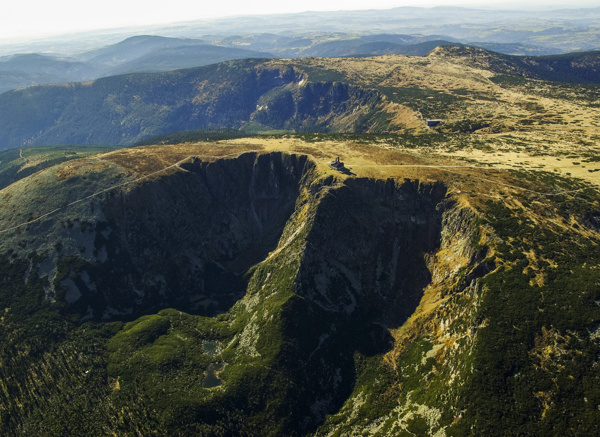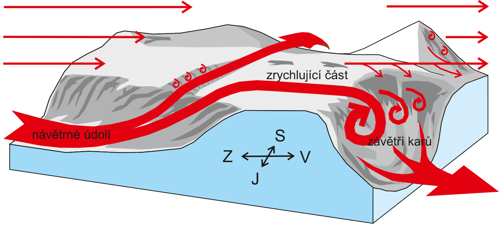Anemo-orographic systems
This natural phenomenon was first described for world science in the Krkonoše Mountains by prof. Jan Jeník. The theory of anemo-orographic systems explains the remarkable interplay of natural forces - wind, snow, avalanches and ancient glaciers - which is manifested in the lawful arrangement of living nature on the windward and leeward slopes of the mountains and conditions, among other things, the unique richness of the Krkonoše botanical gardens.

Wind currents rising through the windward valleys of the Mumlava River, the White Elbe or the Dolský potok Creek increase their speed due to the narrowing valley profiles, even when flowing over the plateaus of the Elbe, Pančavská louka Meadow, Bílá louka Meadow and Čertova louka Meadow. The strong wind currents then fall into the lee of the glacial cirques of the Kotelní jáma Pit, Labská jáma Pit, Sněžní jáma Pit and Studniční jáma Pit, into the Úpská jáma Pit or the pits of Staw. For millennia, these local winds have been flowing in the same direction and thus fundamentally influencing the distribution of rain and snowfall and the formation of snow avalanches. Avalanche slopes are therefore permanently treeless, with light, sun, lee and plenty of moisture from long-lying snowfields. However, the winds also transport plant seeds, small animals and soil particles from nearby and distant locations. In the lee of the glacial cirques, a kind of 'biological garbage dump' is thus functioning, consisting of the most diverse nature of the entire mountain range. In the literature, this phenomenon is referred to by the term anemo-orographic systems. It was discovered and described in detail for world science right here, in the Krkonoše Mountains.

Model of anemo-orographic systems in the Bílé Labe valley

